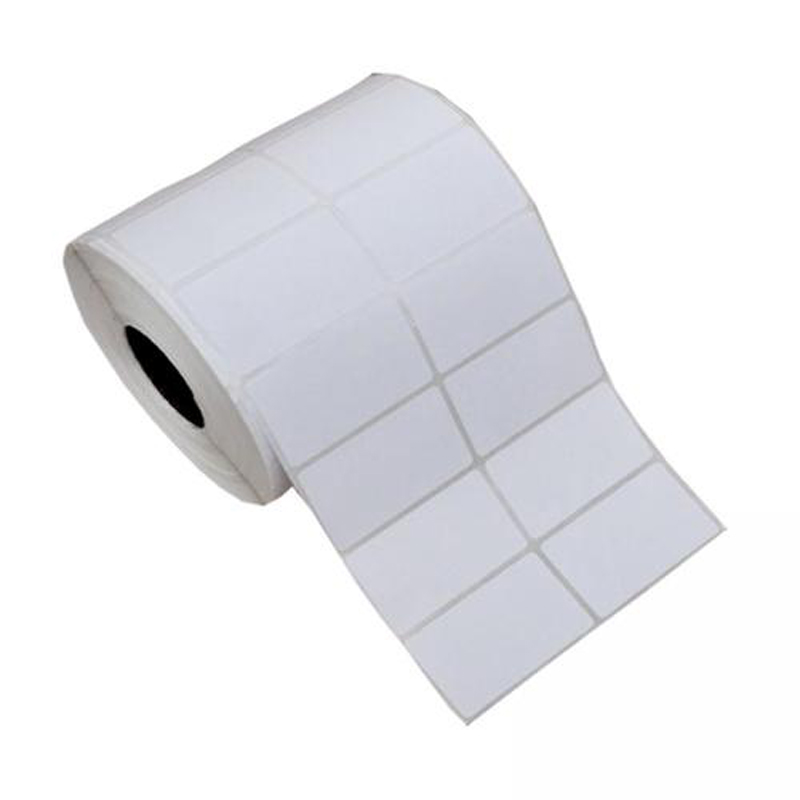高效打印:条码标签纸的挑选与应用指南
尕枯非生
2024-10-28 18:26:53
0次
**高效打印:条码标签纸的挑选与应用指南**
在现代化的生产与物流管理中,条码标签纸的应用越来越广泛。选择合适的条码标签纸以及正确应用它,对于提高打印效率和整体工作效率至关重要。本文将为您详细介绍条码标签纸的挑选与应用指南,帮助您实现高效打印。
一、条码标签纸的挑选
1. 材料选择
根据使用环境,选择合适的材料。常见的标签纸材料有纸质、聚酯(PET)和聚氯乙烯(PVC)等。纸质标签适用于一般环境,而PET和PVC材料适用于需要耐高温、耐水或耐油的环境。
2. 尺寸与形状
根据实际需求选择标签的尺寸和形状。确保标签尺寸与打印设备匹配,同时也要考虑产品的形状和大小以便正确粘贴。
3. 性能要求
考虑标签的抗刮性、耐久性、防伪性等性能要求。根据实际使用环境选择具有相应性能的标签纸。
4. 成本考虑
在满足性能要求的前提下,考虑成本因素。不同品牌、不同材质的标签纸价格差异较大,需根据企业实际情况进行选择。
二、条码标签纸的应用
1. 设计标签内容
根据实际需求设计标签内容,包括条码、文字、图形等。确保内容清晰、易读,符合相关标准和规范。
2. 打印设置
根据所选标签纸的材质和性能,调整打印设备的设置,如打印温度、速度等。确保打印出的标签清晰、不易脱落。
3. 粘贴位置
根据产品特点和实际需求,选择合适的粘贴位置。确保标签粘贴牢固、不易脱落,同时方便扫描和识别。
4. 定期检查与更换 定期检查标签的使用情况,如有脱落、模糊等现象,及时更换新的标签。同时,定期清洁打印设备和粘贴区域,保持良好的工作环境。 三、总结 通过以上挑选与应用指南,您可以选择到合适的条码标签纸并正确应用它,从而提高打印效率和整体工作效率。请注意材料选择、尺寸与形状、性能要求以及成本考虑等方面,合理设计标签内容,调整打印设备设置,选择合适的粘贴位置并定期检查与更换标签。希望本文对您有所帮助,让您实现高效打印! --- ### Efficient Printing: Selection and Application Guide for Barcode Label Paper In modern production and logistics management, the application of barcode label paper is becoming more prevalent. Choosing the right barcode label paper and applying it correctly are crucial for improving printing efficiency and overall work productivity. This article provides a detailed guide to selecting and applying barcode label paper to help you achieve efficient printing. **Selection of Barcode Label Paper** 1. Material Selection Choose the right material based on the usage environment. Common label paper materials include paper, polyester (PET), and polyvinyl chloride (PVC). Paper labels are suitable for general environments, while PET and PVC materials are suitable for environments that require high temperatures, water, or oil resistance.2. Size and Shape
Select the appropriate size and shape of the label based on actual needs. Ensure that the label size matches the printing device, and also consider the product's shape and size for proper attachment. 3. Performance Requirements Consider the scratch resistance, durability, anti-counterfeiting properties, and other performance requirements of the label. Select label paper with corresponding performance based on the actual usage environment. 4. Cost Considerations Take cost into account while meeting performance requirements. The prices of different brands and materials of label paper vary significantly, so choose according to the actual situation of the enterprise. **Application of Barcode Label Paper** 1. Design Label Content Design the label content based on actual needs, including barcodes, text, graphics, etc. Ensure that the content is clear, easy to read, and complies with relevant standards and regulations. 2. Print Settings Adjust the settings of the printing device based on the selected label paper material and performance, such as printing temperature and speed. Ensure that the printed labels are clear and not easily detached. 3. Attachment Location Choose the appropriate attachment location based on product characteristics and actual needs. Ensure that the label is attached securely and not easily detached, while also being convenient for scanning and recognition. 4. Regular Checks and Replacements Regularly check the usage of labels. If there is peeling, blurring, or other phenomena, replace them with new labels promptly. Also, regularly clean the printing device and attachment areas to maintain a good working environment. **Conclusion** By following the selection and application guide above, you can choose the appropriate barcode label paper and apply it correctly to improve printing efficiency and overall work productivity. Pay attention to material selection, size相关内容
热门资讯
揭秘条码标签纸:功能、特点及适...
条码标签纸是一种用于打印条形码和二维码的纸质材料,广泛应用于零售、物流、医疗、制造等行业,具有耐用、...
解锁条码标签纸的多样应用场景
条码标签纸具有广泛的应用场景和价值,可应用于零售、物流、医疗、生产制造等多个行业,实现快速识别、管理...
条码标签纸:办公耗材中的必备利...
条码标签纸是办公耗材中不可或缺的利器,适用于多领域,可快速准确记录和识别信息,提高效率和数据安全性,...
提升效率:条码标签纸在办公流程...
条码标签纸在办公流程中扮演重要角色,能自动化追踪、快速识别分类、减少错误率、管理库存、增强可读性、适...
条码标签纸的选购指南:提升办公...
选购条码标签纸需明确需求,考虑材质、尺寸、粘性、抗污性和兼容性等因素,选择知名品牌和合适价格,并注意...
解析条码标签纸:如何成为现代办...
条码标签纸在办公中,快速、准确管理物品信息。选材合理,设备解析迅速,配合软件可高效管理物品信息,并培...
探索条码标签纸的多样化用途与优...
条码标签纸在零售、物流、资产管理、医疗保健和工业制造等领域具有多样化用途,其优势包括高效性、准确性、...
选购指南:如何选择适合你的条码...
选购条码标签纸需考虑使用环境、条码类型、标签尺寸形状、材质、成本效益及品牌质量。选择适合的标签纸能提...
条码标签纸的印制技术及优势分析
文章摘要:本文介绍了条码标签纸的印制技术,包括印刷、涂层处理和条码打印等环节,并分析了其高质、耐用、...
办公室中的小助手:条码标签纸的...
条码标签纸是办公室中的小助手,可进行物品标识、资产管理、库存管理、快递与邮件管理及会议活动标识,提高...



